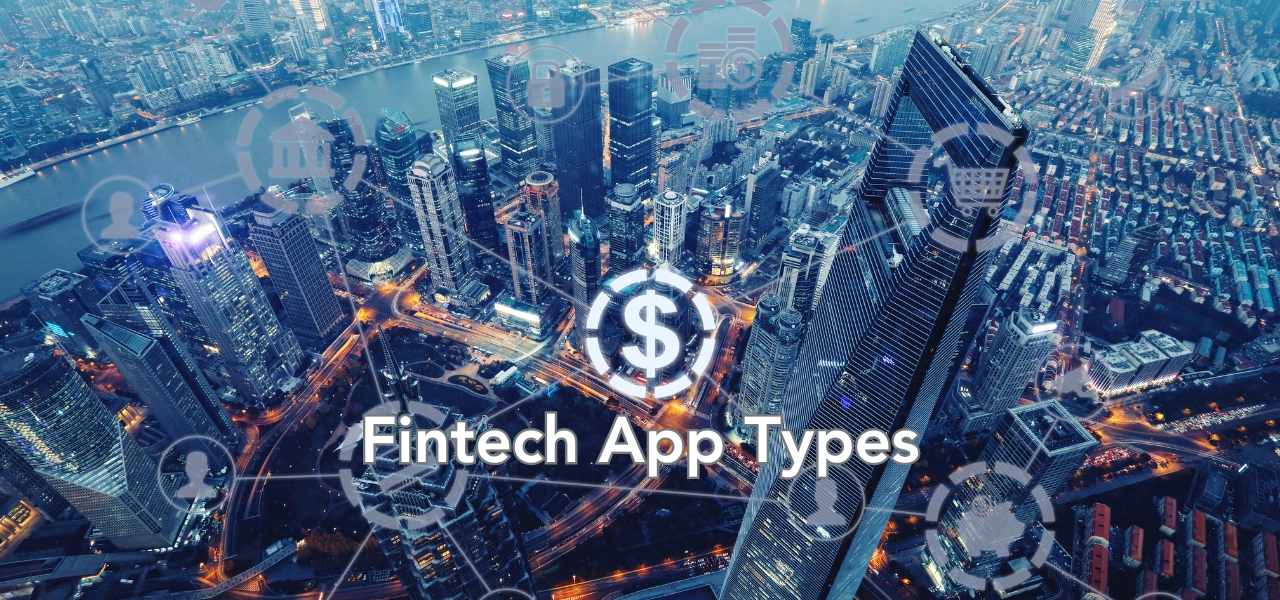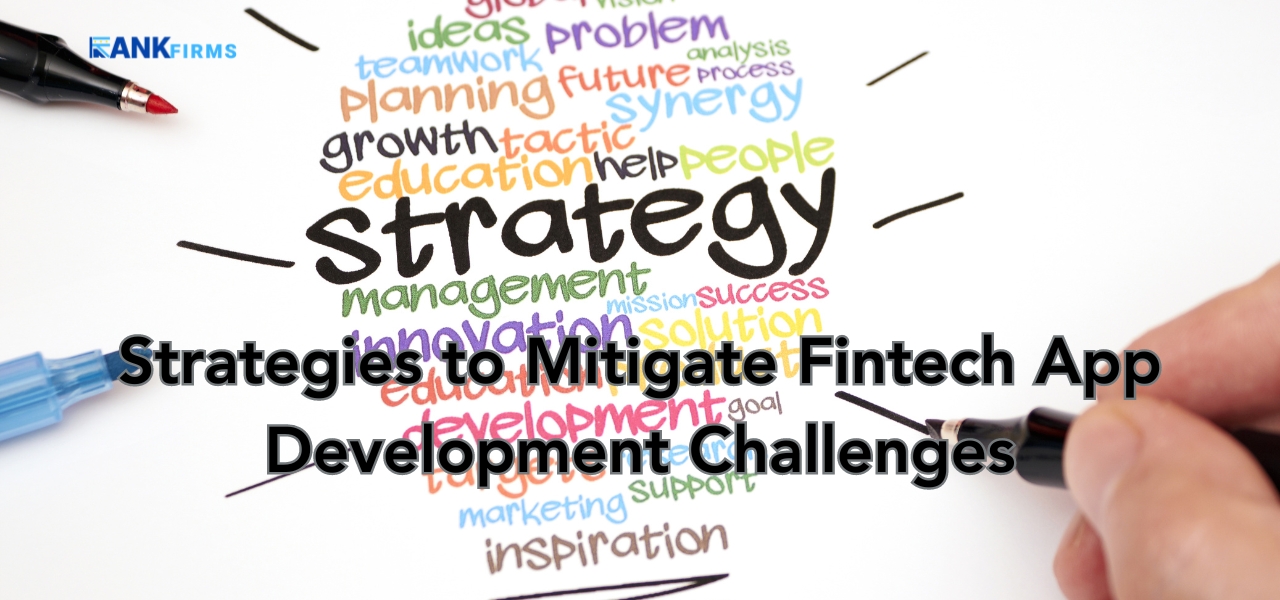Did you know that a FinTech or a Financial Technology company is both a business and a technology provider? Yes, over the last decade, FinTech has evolved a lot. The sector has witnessed a remarkable uptick with a notable concentration in America.
FinTech isn’t limited to startups, it includes multibillion-dollar enterprises transforming the global financial landscape. The global user base for digital payments is expected to exceed 3.5 billion by the end of 2024.
The combination of the financial industry and technology holds potential and software development companies are integrating FinTech in developing digital payments, cryptocurrency, blockchain, insuretech, wealthtech, AI and many more. FinTech seems promising yet it is challenging because of the segmentations within the industry. If you want to invest in FinTech app development, this article is just right for you. We will here guide you on how to start your business with a FinTech and the cost to launch it.
What Is A FinTech App?
Fintech apps have revolutionised methods of managing our finances, offering convenience, efficiency, and accessibility. Let’s delve deeper into the key features and functionalities of these apps:
1. Core Functionalities of Fintech Apps:
Digital Payments:
Enabling seamless money transfers, bill payments, and peer-to-peer transactions.
Money Management:
Offering tools for budgeting, expense tracking, savings goals, and financial planning.
Investment Platforms:
Providing access to stocks, bonds, mutual funds, and other investment options.
Lending and Borrowing:
Facilitating peer-to-peer lending, personal loans, and credit scoring.
Financial Advice:
Offering personalised financial advice, including retirement planning and tax optimisation.
2. Impact of Fintech on the Financial Industry:
Increased Competition:
Fintech startups are overpowering traditional banks by offering innovative services and lower fees.
Enhanced Customer Experience:
Fintech apps prioritise user experience with intuitive interfaces and personalised features.
Financial Inclusion:
Fintech apps can expand financial services to underserved populations.
Innovation:
Fintech drives innovation in the financial industry, leading to new products and services.
With the understanding of FinTech, it is time to understand the type of application you want to invest in. There are different types of FinTech apps, let’s explore:
Fintech App Types

1. Payment Apps
Core Functionality:
Facilitating digital transactions, including person-to-person payments, online purchases, and in-store payments.
Key Features:
Mobile wallets, peer-to-peer transfers, QR code payments, contactless payments, and integration with online marketplaces.
Examples:
PayPal, Venmo, Cash App, Apple Pay, Google Pay
2. Personal Finance Apps
Core Functionality:
Helping users manage their finances, track spending, create budgets, and set financial goals.
Key Features:
Expense tracking, budgeting tools, savings goals, investment tracking, bill management, and financial advice.
Examples:
Mint, YNAB (You Need a Budget), PocketGuard, Personal Capital
3. Investment Apps
Core Functionality:
Providing platforms for investing in stocks, bonds, mutual funds, ETFs, and other financial instruments.
Key Features:
Stock quotes, market data, portfolio management, fractional shares, robo-advisory services, and educational resources.
Examples:
Robinhood, E*TRADE, Acorns, Betterment
Also Read: Steering Clear of Mobile App Development Failures: Avoiding Common Pitfalls
4. Lending Apps
Core Functionality:
Connecting borrowers and lenders for loans and credit facilities.
Key Features:
Loan applications, credit scoring, loan origination, and loan servicing.
Examples:
LendingClub, Prosper, SoFi
5. Insurtech Apps
Core Functionality:
Offering insurance products and services through digital platforms.
Key Features:
Policy comparison, online quotes, claims management, and telematics-based insurance.
Examples:
Lemonade, Geico, Progressive (for their digital offerings)
6. Cryptocurrency Apps
Core Functionality:
Providing platforms for buying, selling, and trading cryptocurrencies.
Key Features:
Digital wallets, market data, trading tools, and security features.
Examples:
Coinbase, Binance, Kraken
These types will help you understand which FinTech application you need to develop that can cater for your business needs. Now, let’s move to the cost of designing and developing an app.
Cost Components of FinTech Application Development

| Cost Component | Cost Range (USD) | Factors Affecting Cost |
| Development Costs | $50,000 – $250,000+ | Team size, experience, location, project complexity |
| Technology Stack | $5,000 – $50,000 | Choice of platforms, tools, and licenses |
| Design and UI/UX | $10,000 – $50,000 | Complexity of design, number of iterations |
| Testing and Quality Assurance | $5,000 – $20,000 | Scope of testing, number of test cases |
| Infrastructure | $5,000 – $20,000 per month (cloud-based) | Server resources, data storage, bandwidth |
| Security | $5,000 – $20,000 | Security audits, penetration testing, compliance |
| Third-Party Integrations | $5,000 – $20,000 | Number of integrations, complexity of integration |
| Marketing and Launch | $5,000 – $50,000 | Advertising, app store optimsation, PR |
| Maintenance and Updates | $5,000 – $10,000 per month | Ongoing support, bug fixes, feature updates |
| Compliance and Regulations | $5,000 – $20,000 | Legal and compliance fees, audits |
The cost of developing a fintech app varies significantly based on its complexity. Here’s a breakdown of key factors influencing cost across different app types that IT services companies may demand:
1. Simple Fintech App (e.g., basic budgeting app)
Core Functionality:
Limited features, basic user interface, and straightforward data management.
Cost Drivers:
Development team size, design simplicity, and basic technology stack.
Cost Estimate:
Typically ranges from $50,000 to $150,000.
2. Medium Complexity Fintech App (e.g., peer-to-peer lending app)
Increased Features:
Advanced functionalities like loan origination, risk assessment, and payment processing.
Cost Drivers:
Complex algorithms, data security, compliance requirements, and user experience design.
Cost Estimate:
Ranges from $150,000 to $350,000.
3. High-Complexity Fintech App (e.g., cryptocurrency exchange)
Sophisticated Features:
Real-time data processing, high-security standards, and complex integrations.
Cost Drivers:
Advanced technology stack, robust security measures, compliance with financial regulations, and ongoing maintenance.
Cost Estimate:
Can exceed $500,000 and vary widely based on specific features and requirements.
Understanding Core Features of Fintech Apps That Should Be Incorporated
Let’s explore the essential features of fintech apps in more detail to understand their functionalities and how they benefit users:
1. User Authentication:
This ensures secure access to the app using various methods:
Biometrics:
Fingerprint, facial recognition, or voice recognition for secure and convenient login.
Two-Factor Authentication (2FA):
An extra layer of security that requires a secondary verification code after entering a password.
Secure Password Management:
The app may offer tools to generate strong passwords and secure them.
2. Account Management:
This feature allows users to manage their financial accounts in one place:
Multiple Account Linking:
Connect bank accounts, credit cards, investment accounts, etc., for a holistic view.
Account Balance Overview:
See real-time balances for all linked accounts.
Transaction History:
Track past transactions with categorisation for easier budgeting.
Account Statements and Reports:
Download detailed account statements and reports for tax purposes or record-keeping.
3. Payment and Transfers:
This feature facilitates seamless money movement:
Peer-to-Peer Payments:
Send and receive money instantly between users (e.g., Venmo, Cash App).
Bill Payments:
Schedule and pay bills directly through the app, eliminating the need for paper checks.
Mobile Wallet Integration:
Use the app for contactless payments at stores or online.
International Transfers:
Send and receive money internationally with competitive exchange rates.
Contactless Payments (NFC):
Tap your phone at a payment terminal to pay quickly and securely.
Security Measures:
Robust security features are crucial for protecting user data and financial information:
Data Encryption:
Data is scrambled in transit and at rest to prevent unauthorised access.
Fraud Detection and Prevention:
The app uses algorithms to identify and block suspicious activity.
Secure Data Storage:
User data is stored on strict & robust servers with industry-standard security protocols.
Regular Security Audits:
Regular security assessments ensure that the app stays secure against evolving threats.
4. Customer Support:
Having accessible support channels is essential for user satisfaction:
Live Chat:
Get real-time assistance from customer service representatives.
Email Support:
Send inquiries and receive detailed responses via email.
Phone Support:
Talk directly to a customer service representative for complex issues.
By prioritising these core features, fintech apps can create a secure and user-friendly platform that empowers users to manage their finances effectively.
Also Read: 10 Factors to choose the best mobile app development company.
Advanced Features of Fintech Apps
While the core features are essential for any fintech app, it’s the advanced features that differentiate top-tier apps from the rest. Here’s a deeper dive:
1. Personal Finance Management (PFM)
AI-Powered Budgeting:
Utilizing artificial intelligence to analyse spending patterns and suggest budget adjustments.
Financial Goals:
Setting and tracking financial goals (saving for a house, retirement, vacation).
Investment Recommendations:
Providing personalised investment advice based on user risk tolerance and financial goals.
Debt Management Tools:
Offering tools to manage and reduce debt, such as debt snowball or avalanche methods.
2. Investment Tools
Robo-Advisors:
Automated investment portfolios based on user risk tolerance and financial goals.
Social Trading:
Following other investors and copying their trades.
Fractional Shares:
Allowing investment in small portions of high-priced stocks.
Cryptocurrency Trading:
Offering features like margin trading, futures, and options.
3. Lending and Borrowing
Credit Scoring:
Providing users with their credit score and offering improvement tips.
Loan Eligibility Checks:
Pre-qualifying users for loans based on their financial information.
Debt Consolidation:
Helping users manage multiple debts through consolidation loans.
4. Insurance Services
Personalised Insurance Quotes: .
Providing tailored insurance quotes based on user data.
Claims Assistance:
Streamlined claims process with real-time updates.
Usage-Based Insurance: .
Offering discounts based on driving behaviour (for auto insurance).
5. Cryptocurrency Support
Hardware Wallet Integration:
Securely storing cryptocurrency offline.
Tax Reporting:
Assisting users with tax reporting for cryptocurrency transactions.
Decentralised Finance (DeFi) Integration:
Offering access to DeFi protocols and services.
6. Additional Advanced Features
Biometric Authentication:
Enhancing security with fingerprint, facial recognition, or voice recognition.
Chatbots:
Providing instant customer support and assistance.
Blockchain Integration:
Ensuring transparency and security in transactions.
Open Banking Integration:
Connecting to multiple financial institutions for a comprehensive financial overview.
Data Analytics and Insights:
Providing personalised financial insights based on user data.
By asking mobile app development companies to incorporate these advanced features, fintech apps can deliver a superior user experience and create a competitive advantage.
Did you know challenges and obstacles also impact the cost of FinTech app development? Below we have shared the challenges that can impact the cost.
How Challenges Impact Fintech App Development Cost
Yes, challenges significantly impact the cost of fintech app development. Overcoming these hurdles often requires additional time, resources, and expertise, driving up the overall budget.
Here are some key challenges that can increase costs:
1. Security and Compliance:
Meeting stringent security standards and adhering to financial regulations can be complex and costly.
2. Integration with Financial Institutions:
Connecting to multiple financial institutions and ensuring seamless data transfer can be time-consuming and expensive.
3. Data Privacy and Security:
Protecting sensitive user data requires robust security measures, which can increase development costs.
4. User Experience (UX) Design:
Creating a user-friendly and intuitive interface can involve multiple iterations and design refinements, impacting the budget.
4. Regulatory Changes:
The fintech industry is subject to frequent regulatory updates, requiring ongoing modifications to the app, which can add to costs.
5. Competition:
Staying ahead of competitors often involves investing in research and development, which can increase expenses.
6. Talent Acquisition:
Finding skilled developers with fintech expertise can be challenging and costly.
By understanding these challenges and planning accordingly, businesses can better estimate development costs and allocate resources effectively.
Strategies to Mitigate Fintech App Development Challenges

Overcoming challenges is crucial for successful fintech app development. Here are some strategies:
Also Read: Top 10 FAQ Before Hiring Mobile App Development Company
1. Addressing Security and Compliance
Robust Security Measures:
Implement strong encryption, firewalls, and intrusion detection systems.
Regular Security Audits:
Conduct frequent security assessments to identify vulnerabilities.
Compliance Framework:
Develop a comprehensive compliance framework to adhere to regulations (GDPR, CCPA, etc.).
Third-Party Security Audits:
Engage external experts for independent security evaluations.
Managing User Experience
User-Centric Design:
Prioritize user needs and preferences throughout the development process.
Usability Testing:
Conduct regular usability tests to identify pain points and improve the user interface.
Performance Optimization:
Ensure the app loads quickly and performs smoothly.
Clear Communication:
Provide clear and concise information to users.
2. Overcoming Integration Challenges
API Integration:
Utilize well-documented APIs for seamless integration with third-party services.
Data Mapping:
Establish clear data mapping processes to ensure data consistency.
Testing Integration Points:
Thoroughly test integrations to identify and resolve issues.
3. Scaling for Growth
Cloud Infrastructure:
Leverage cloud-based solutions for scalability and flexibility.
Microservices Architecture:
Break down the app into smaller, independent services for easier scaling.
Performance Optimization:
Continuously monitor and optimise app performance to handle increased user load.
4. Talent Acquisition and Retention
Competitive Compensation:
Offer competitive salaries and benefits to attract top talent.
Professional Development:
Invest in employee training and development to retain talent.
Remote Work Options:
Consider flexible work arrangements to improve employee satisfaction.
By implementing these strategies, fintech companies can effectively address challenges and increase the chances of developing successful and secure applications.
How to Generate Revenue from a FinTech App
1. Transaction Fees
How It Works: Charge a small percentage or fixed fee for each transaction processed through the app.
Example: Payment apps like PayPal and Venmo charge fees for business transactions and instant transfers.
Revenue Potential: Transaction fees can generate substantial revenue, especially if the app processes high transaction volumes.
2. Subscription Plans
How It Works: Offer premium features or enhanced services through monthly or yearly subscriptions.
Example: Budgeting apps like Mint and expense management apps offer advanced analytics and financial planning tools for subscribers.
Revenue Potential: Recurring subscriptions create a steady revenue stream.
3. Lending and Interest Income
How It Works: Provide loan services and earn interest on repayments.
Example: Apps like Affirm and Cash App offer micro-loans and earn revenue through interest rates.
Revenue Potential: Lending-based revenue models are lucrative but require robust compliance and credit risk management.
4. Advertising and Partnerships
How It Works: Collaborate with financial institutions, brands, or other businesses to show ads or promote services within the app.
Example: Apps like Credit Karma recommend financial products and earn affiliate revenue.
Revenue Potential: Advertising is scalable and offers flexibility, but it must align with user interests to avoid disrupting the experience.
5. Interchange Fees
How It Works: For apps offering debit or credit cards, earn revenue from interchange fees when users make purchases.
Example: Challenger banks like Chime earn a percentage of each card transaction.
Revenue Potential: This model works best for apps with large user bases actively using their payment cards.
6. Data Monetization
How It Works: Aggregate and anonymize user data to provide insights to third-party businesses, such as market research firms or banks.
Example: Analytics-driven FinTech platforms offer anonymized data trends for financial forecasting.
Revenue Potential: While lucrative, this model requires transparency and compliance with data privacy laws like GDPR or CCPA.
7. Freemium Model
How It Works: Offer basic features for free and charge users for advanced or premium services.
Example: Personal finance apps like YNAB (You Need a Budget) charge for access to additional tools and reports.
Revenue Potential: Attracts a large user base and converts free users into paying customers over time.
8. White-Labeling Solutions
How It Works: Develop a FinTech app and license it to other businesses as a white-labeled solution.
Example: Payment gateways like Stripe and Plaid offer APIs for integration into other apps.
Revenue Potential: Earn through licensing fees or revenue-sharing agreements.
9. Investment Management Fees
How It Works: Offer wealth management or robo-advisory services and charge a percentage of the assets managed.
Example: Investment platforms like Robinhood or Betterment earn through assets-under-management fees or interest from idle funds.
Revenue Potential: Highly profitable but requires a strong technical and compliance infrastructure.
10. Cross-Selling and Upselling
How It Works: Offer additional financial products like insurance, savings plans, or credit score monitoring for an added fee.
Example: Apps like Paytm and Revolut provide bundled services for additional revenue.
Revenue Potential: Diversified offerings increase per-user revenue.
11. Blockchain and Cryptocurrency Revenue Models
How It Works: Facilitate crypto transactions and charge fees, or offer tokenized services like staking or mining rewards.
Example: Apps like Coinbase and Binance charge transaction and listing fees for cryptocurrency exchanges.
Revenue Potential: High potential in the rapidly growing crypto market.
Also Read: What Should You Know Before Hiring Blockchain Development Company
12. Crowdfunding or P2P Platforms
How It Works: Enable peer-to-peer lending or crowdfunding campaigns, earning revenue through service fees or percentage cuts.
Example: P2P lending platforms like LendingClub earn from transaction fees on loans.
Revenue Potential: Works best in markets with strong demand for alternative funding.
FAQs for Evaluating FinTech App Development Cost
1. How much does it cost to develop a FinTech app?
The cost varies widely depending on factors like app complexity, features, platform (iOS, Android, or both), and development team location. A basic FinTech app might cost $30,000–$50,000, while a feature-rich app with advanced functionalities like blockchain, AI, or multi-currency support could cost $100,000–$300,000 or more.
2. What are the main factors that influence the cost of FinTech app development?
- App Features: Advanced features like real-time analytics, payment gateways, or fraud detection systems significantly affect cost.
- Compliance Requirements: Ensuring the app meets regulations (e.g., GDPR, PCI DSS) adds to development costs.
- Tech Stack: Using advanced technologies like blockchain or AI increases the budget.
- UI/UX Design: Custom designs tailored to user experience may be more expensive than template-based options.
- Third-party Integrations: Adding APIs for payments, KYC, or currency exchange incurs additional expenses.
3. How do regulatory requirements affect the cost of FinTech app development?
Compliance with financial regulations such as PCI DSS, GDPR, or PSD2 adds complexity and cost to development. These include integrating secure encryption, maintaining audit trails, and ensuring user data privacy. Costs for compliance can range from $10,000 to $50,000, depending on the region and regulations.
4. What is the cost difference between a basic FinTech app and an enterprise-grade app?
A basic FinTech app with essential features like user registration, account management, and basic transactions may cost $30,000–$50,000.
An enterprise-grade FinTech app with features like blockchain integration, multi-currency support, real-time data analytics, and AI-driven insights could cost more than $150,000.
5. How does the development team’s location impact the cost?
Development costs vary by region:
- North America/Western Europe: $100–$200 per hour.
- Eastern Europe: $40–$70 per hour.
- South Asia: $20–$50 per hour.
Hiring from regions with lower rates can reduce costs without compromising quality, provided the team has proven expertise.
6. What are the ongoing costs after the app is developed?
Ongoing costs include:
- Server Hosting: $500–$2,000/month, depending on the user base.
- Maintenance and Updates: Typically 20–25% of the initial development cost annually.
- Compliance Updates: Costs for meeting evolving regulatory standards.
- Marketing and User Acquisition: Budgets vary depending on the target audience.
Also Read: Performance, Cost, and Time: Deciding Between Android vs IOS vs Hybrid App Development
7. Can using third-party APIs lower the cost of development?
Yes, third-party APIs for features like payment processing (e.g., Stripe, PayPal), currency conversion, or KYC verification can reduce custom development costs. However, they come with ongoing subscription fees that need to be factored in.
8. How can I estimate the timeline for FinTech app development, and does it affect the cost?
Development timelines depend on app complexity:
- A basic app may take 3–6 months.
- A complex app can take 9–18 months or more.
- Longer timelines typically increase costs due to extended team engagement.
9. What technologies are commonly used in FinTech apps, and do they affect costs?
Common technologies include:
- Blockchain for secure transactions (adds significant cost).
- AI/ML for fraud detection and personalised insights (moderate to high cost).
- Cloud Solutions like AWS or Azure for scalability (subscription-based costs).
- APIs for payment gateways or financial data integration (lower initial cost but ongoing fees).
Choosing the right tech stack can balance cost and functionality.
10. Is it possible to reduce costs without compromising quality?
Yes, by:
- Starting with an MVP to focus on core functionalities.
- Outsourcing to experienced teams in cost-effective regions.
- Leveraging pre-built solutions or third-party APIs.
- Prioritizing features based on user needs and rolling out updates later
Conclusion
Developing a fintech app involves a complex interplay of various factors that significantly impact the overall cost. While it’s possible to provide general cost estimates, the actual expenditure can fluctuate widely based on specific project requirements, technology choices, and team expertise.
By carefully considering factors like app complexity, feature set, design, technology stack, team location, and security, businesses can make informed decisions and allocate budgets effectively. Implementing cost-saving strategies, such as prioritising features, leveraging open-source technologies, and optimising development processes, is essential for achieving a balance between cost and quality. Ultimately, the success of a fintech app depends not only on its functionality but also on its ability to deliver value to users while staying within budget.







